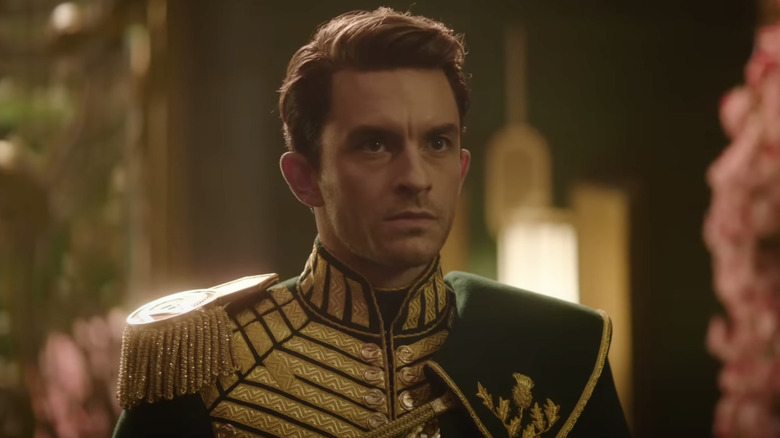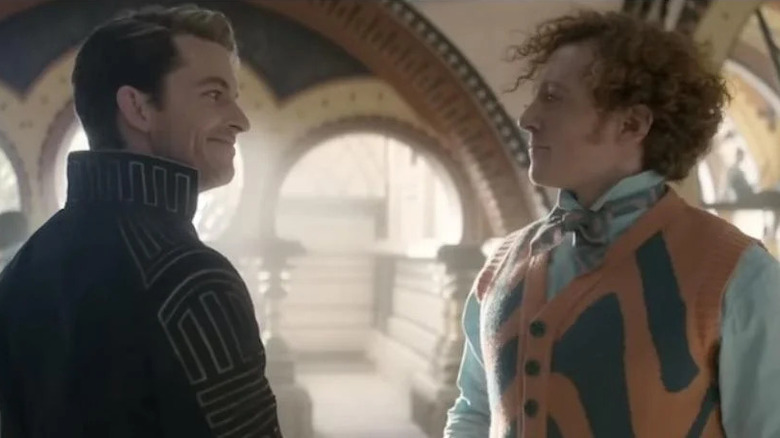The Wicked: For Good Scene That Came Close To Turning The Film Into A Horror Movie
This article contains spoilers for "Wicked: For Good" by discussing plot points from the Broadway musical.
In Jon M. Chu's overblown 2024 musical "Wicked," audiences were introduced to the handsome Prince Fiyero, a cocky Winkie played by Jonathan Bailey. Everyone was charmed by Fiyero, and his song "Dancing Through Life" was an energetic highlight of the movie. Audiences also met the more bookish and shy Boq Woodsman, an unassuming Munchkin played by Ethan Slater. The first part of "Wicked" concerned itself only with these characters' love lives and their popularity among the Shiz student body. Most notably, Boq had a crush on Galinda (Ariana Grande), the woman destined to grow up to be Glinda the Good Witch in "The Wizard of Oz." The follow-up film, "Wicked: For Good," is slated for release on November 21, 2025. That film will see the ultimate fates of Foyero and Boq. The musical has been an ultra-smash for a decade, and it was, in turn, based on a 1995 novel by Gregory Maguire, so the characters' fates are well-known.
Fans of the Broadway hit know that Fiyero is destined to become the Scarecrow in "The Wizard of Oz," while Boq will be forcibly transformed into the metal-bodied Tin Woodman. The process by which their respective transformations occur will be given in bleak, Cronenbergian detail in "For Good."
Indeed, the transformations are so unsettling, "For Good" nearly tipped into horror movie territory. Director Jon M. Chu was interviewed in for SFX Magazine, and he marveled over how difficult it was to envision the Tin Man and the Scarecrow as living, semi-artificial beings, but also at how terrifying it was to witness them mutating. After all, "Wicked" is the origin story of the Wicked Witch of the West, so surely there should be some horror involved.
The transformation of the Scarecrow and the Tin Man are horrifying (thank goodness)
/Film has written before about the fate of Boq in particular. I shan't go into detail here, but it's pretty twisted, like something out of "Tetsuo: The Iron Man." Chu noted that the film's primary concern was ensuring that audiences could still recognize the actors underneath all the makeup and effects. As he put it:
"Tin Man and Scarecrow were really difficult. It's a combination of many disciplines, costumes, hair and make-up, and also digital effects. That whole process started with what do we want to see through the actor, and the number one thing we wanted to keep was the idea that these are not caricatures. You need to recognise the characters you've come to know beneath it, you have to recognize those eyes."
A lot of thought and energy went into the cinematic designs of the Tin Man and the Scarecrow, too. Like all the ornate costumes and cluttered, overdesigned sets, the filmmakers had to spend a lot of attention to detail. And while they did devote themselves to texture, clothing, and human character design, it eventually struck everyone how horrifying everything was. Indeed, the Tin Man in particular was scariest, as his body seemed to absorb mental objects in his vicinity. As Chu put it:
"It's so close to turning into a horror movie as we see the Scarecrow and Tin Man transformation. It was such a long process, of comparing density, of burlap sack, how scratched it should be, whether to give him a hat, and with the Tin Man experimenting with how to incorporate what was around him before he transformed, making the tray his shoulder pads, the teacups his ears. It was amazing seeing it all come together."
Sounds terrifying.

